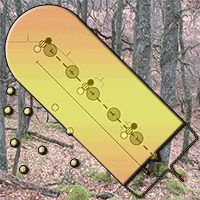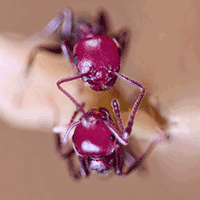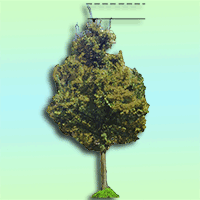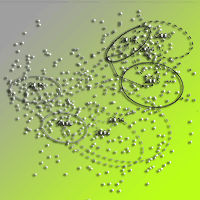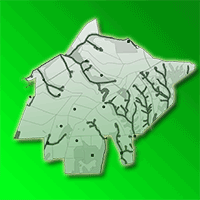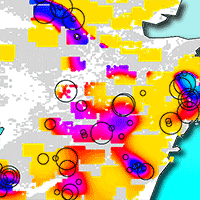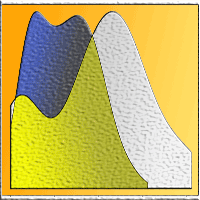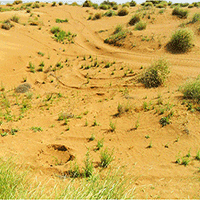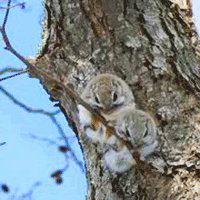
Gliding patterns of Siberian flying squirrels in relation to forest structure
Kei K Suzuki (1-2) , Hisashi Yanagawa (1)
iForest - Biogeosciences and Forestry, Volume 12, Issue 1, Pages 114-117 (2019)
doi: https://doi.org/10.3832/ifor2954-011
Published: Feb 11, 2019 - Copyright © 2019 SISEF
Short Communications
Abstract
It is widely accepted that the evolution of gliding ability is correlated with forest environments, but differences in gliding locomotion in relation to forest structure remains poorly elucidated in mammals. Although the cost of gliding locomotion decreases with increasing glide distance per unit vertical drop (glide ratio), gliding mammals often use costly low-ratio glides and seldom exploit maximum-ratio glides. In this study, we evaluated our hypothesis that low-ratio glides are related to forest structure by measuring glide distance, vertical drops and landing tree heights in Siberian flying squirrels (Pteromys volans), and we also recorded their behaviour in landing trees. Glide ratio decreased with increasing landing tree height. Squirrels landed on taller trees using low-ratio glides and tended to depart from them quickly without spending much time there, but used high-ratio glides to land on shorter trees for foraging or nesting. Thus, flying squirrels use two different gliding behaviours depending on their immediate objective, where inefficient low-ratio glides are used to move to higher trees for continued gliding. This approach might be necessary for efficiency and safety in subsequent glides, because taller trees facilitate long-distance glides and significantly decrease energy costs and landing impact. Therefore, the location of tall trees in forests and/or average canopy height might alter glide path routes. This study provides important evidence that forest structure affects gliding patterns and provides insight on how forest management could influence the gliding locomotion of Siberian flying squirrels.
Keywords
Behaviour, Forest Structure, Forest Management, Gliding, Locomotion, Mammal, Tree Height
Authors’ Info
Authors’ address
Hisashi Yanagawa
Laboratory of Wildlife Ecology, Obihiro University of Agriculture and Veterinary Medicine, Inada-cho, Obihiro, Hokkaido 080-8555 (Japan)
Current address: Seikai National Fisheries Research Institute, Japan Fisheries Research and Education Agency, 1551-8 Taira, Nagasaki, Nagasaki 851-2213 (Japan)
Corresponding author
Paper Info
Citation
Suzuki KK, Yanagawa H (2019). Gliding patterns of Siberian flying squirrels in relation to forest structure. iForest 12: 114-117. - doi: 10.3832/ifor2954-011
Academic Editor
Massimo Faccoli
Paper history
Received: Sep 03, 2018
Accepted: Dec 17, 2018
First online: Feb 11, 2019
Publication Date: Feb 28, 2019
Publication Time: 1.87 months
Copyright Information
© SISEF - The Italian Society of Silviculture and Forest Ecology 2019
Open Access
This article is distributed under the terms of the Creative Commons Attribution-Non Commercial 4.0 International (https://creativecommons.org/licenses/by-nc/4.0/), which permits unrestricted use, distribution, and reproduction in any medium, provided you give appropriate credit to the original author(s) and the source, provide a link to the Creative Commons license, and indicate if changes were made.
Web Metrics
Breakdown by View Type
Article Usage
Total Article Views: 47513
(from publication date up to now)
Breakdown by View Type
HTML Page Views: 38398
Abstract Page Views: 5069
PDF Downloads: 3277
Citation/Reference Downloads: 7
XML Downloads: 762
Web Metrics
Days since publication: 2498
Overall contacts: 47513
Avg. contacts per week: 133.14
Citation Metrics
Article Citations
Article citations are based on data periodically collected from the Clarivate Web of Science web site
(last update: Mar 2025)
Total number of cites (since 2019): 2
Average cites per year: 0.29
Publication Metrics
by Dimensions ©
Articles citing this article
List of the papers citing this article based on CrossRef Cited-by.
References
Gliding mammals of the world: diversity and ecological requirements. In: “Biology of Gliding Mammals” (Goldingay RL, Scheibe JS eds). Filander Press, Fürth, Germany, pp. 5-40.
Gscholar



